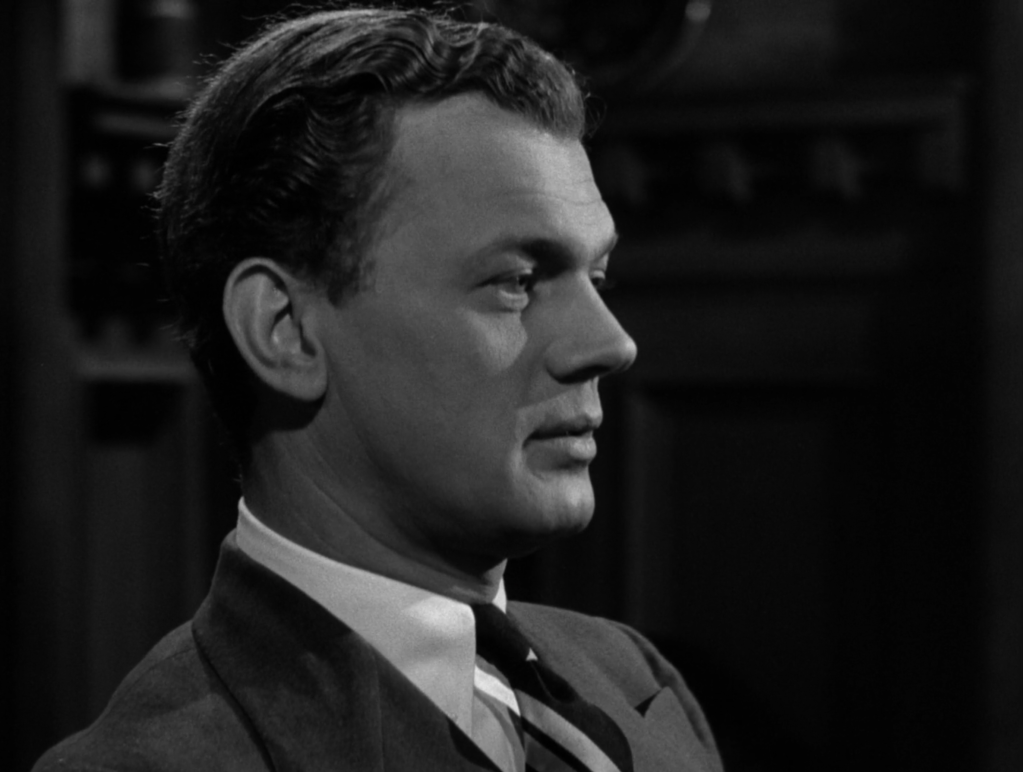Alfred Hitchcock | 1hr 48min

In this story of serial killers and sinister secrets, there is an eerie motif of ballroom dancers twirling and waltzing in tight formations that Alfred Hitchcock frequently cuts to in the midst of thrilling developments. It is an image of duelling doubles, male and female, each of whom perform mirrored movements in perfect synchronicity, and yet serve no narrative purpose other than underscoring that darkly fated relationship at the centre of Shadow of a Doubt. “The same blood flows through our veins Charlie,” murmurs Uncle Charles to his niece, their inseparable connection drawn right down to their parallel names. Even while considering the wretched corners of the human psyche that Alfred Hitchcock has so frequently probed all through his career, perhaps this is his most disturbing – a twisted portrait of two Charlies, uncle and niece, locked in a secret seeping with subtext of incest, grooming, and sexual abuse.

Often just as fascinating as Hitchcock’s obsession with human perversities is the hyper-focused manner in which he invites us into them, as all it takes is a cutaway to a newspaper suspiciously stuffed in a pocket or an inscription on an emerald ring to place the same curiosity in our minds as that which his characters possess. Our gaze is often attached to these objects as intensely as we fixate on a suspected killer, in one scene slowly tracking in with unabashed curiosity on his profile until he turns to face us directly, and the camera suddenly freezes in terror. Therein lies the suspense of Hitchcock’s narrative and camerawork – we may submit to our own yearning for answers to the mystery of the Merry Widow Murderer, but as we see in the case of young Charlie, it is a dangerous and potentially deadly game.


In his crafting of such psychological darkness, Hitchcock digs down into expressionist lighting and mise-en-scene as its visual foundation, at one point trapping Charlie behind the shadows of stair bannisters cast up against the wall by low lights, imprisoning her in the aura of evil that her uncle has brought with him on this family visit. Though there is initially a sly sexual tension between them, their relationship evolves into one of menacing mistrust. “Who would believe you?” he teases her when she begins to consider turning him in, and the sexual abuse allegory grows even more potent when he tells her that it would “kill her mother” should she expose his lies.


Though more known for his pairings with Orson Welles, it is in this collaboration with Hitchcock that Joseph Cotten fully embraces the spotlight, shrewdly containing huge amounts of murderous rage beneath a thin veneer of respectability. With such concentration in his study of his subject’s guilty observations and reactions, Hitchcock turns Uncle Charles into one of the most compelling characters of both their careers, as a man so consumed by a densely nihilistic philosophy that the only rules of existence left to abide by are the depraved voices inside his own head.
“The world’s a hell. What does it matter what happens in it?”
He is no doubt a sad, lonely person, and for those caught up in his web of deceit and murder, the world becomes just as much of an isolating hell them as it is for him. It is especially after Charlie’s suspicions are confirmed by the inscription on the ring he has gifted her that she becomes more alienated than ever, as the camera is lifted up in a magnificent crane shot away from a close-up of that piece of jewellery into a wide with one smooth, deliberate camera movement, forcefully estranging her within the long shadows of a cavernous, gloomy library. And then, just as we have seen before, Hitchcock takes this moment to return to that motif of the perfectly synchronised dancers, and with a single crushing blow he delivers the paradox at the heart of Shadow of a Doubt – that infectious isolation which spreads from one to another through the disclosure of a dark, crushing secret, binding the two together in a complex dance of abuse and manipulation that no one else could possibly understand.


Shadow of a Doubt is available to rent or buy on iTunes, YouTube, and Google Play.

